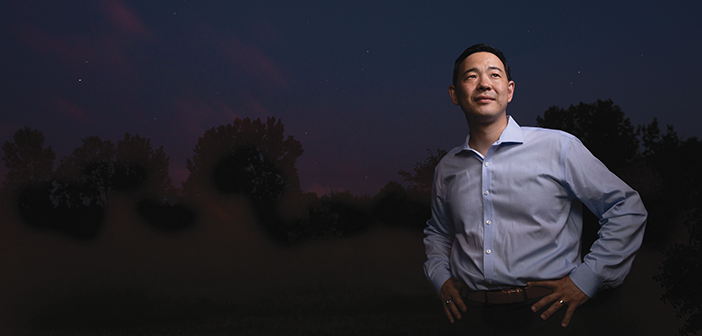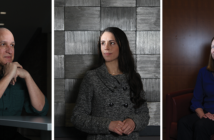Peter Lee ’94 MD’05 PhD’15, MS, MPH, has had a stellar career—literally. A cardiothoracic surgeon and assistant professor of surgery with a joint appointment in biomedical engineering at The Ohio State University, Lee regularly receives research grants from NASA and serves with two national air and space organizations.
Lee’s childhood passion for space has never diminished. While in the Program in Liberal Medical Education, he became interested in research through his neuroscience honors thesis, then spent his first medical school summer in the lab of Herman Vandenburgh, PhD, now professor emeritus of molecular pharmacology, physiology, and biotechnology and of pathology and laboratory medicine, who had flown experiments on the space shuttle. Lee applied to Brown’s MD/PhD program; Vandenburgh became his pathobiology PhD adviser.
“Peter was one of the friendliest and best-liked students that I mentored,” Vandenburgh says. “He encouraged others in the lab to work toward accomplishing their dreams, and was one of the major reasons that another student in my lab at the time, Jessica Meir, went on to become a NASA astronaut.” In September, Meir ’99, MS, PhD, went to space for the first time, to live and run experiments on the International Space Station.
Midway through medical school, Lee took a break to complete a one-year Master of Science in Space Studies at the International Space University in France, learning space law, medicine, and engineering, and conducting research in Russia during his winter trimester.
Planning to specialize in emergency medicine and aerospace medicine to become a NASA flight surgeon, Lee found himself unexpectedly loving his third-year surgical rotation. He decided to pursue surgery, he says, because “you can’t just ‘kind of’ do surgery, but you can be involved in aerospace medicine and research on the side.”
He integrated his love for space through national leadership service in the Aerospace Medical Association and the American Society of Gravitational Space Research. Before getting his own lab in 2013, he helped obtain two separate grants that flew aboard the ISS, studying how spaceflight affects fruit fly hearts and stem cell-derived heart cells. An upcoming study, funded by the NIH and NASA, will send tissue-engineered heart muscle to the ISS.
Perhaps Lee’s most memorable research was his student experiment from Vandenburgh’s lab that flew on John Glenn’s space flight in 1998, which “was really exciting because of all the media coverage,” Lee says. When Glenn came to Brown to receive an honorary degree the following year, “we had a two-hour sit-down with him.”
He continues, “Ironically, I was here at OSU where John Glenn was living 10 minutes away, and I never had the opportunity to meet with him. Unfortunately, he passed away in 2016.”
Born in Germany, Lee grew up in Montreal; he met his wife, Chaelyun, in Providence at a Korean church while she studied industrial design at RISD. They had their daughter, Elisa, now 11, while attending Harvard for graduate school: she for architecture, he for his MPH. A lieutenant colonel in the US Air National Guard, Lee recently completed Air Force flight surgeon training. He enjoys scuba diving and has his pilot’s license and a 7th-degree black belt in taekwondo.
Becoming an astronaut after age 46 is unlikely, but Lee still hopes he might venture into space someday—maybe by “reaching out to Elon Musk,” he jokes. He has “the best of both worlds,” he adds: “I’m a flight surgeon with the Air Force, doing NASA space-related research that’s directly related to the heart and cardiovascular system, while also saving lives performing heart surgery and transplants. What more can I ask for?”




